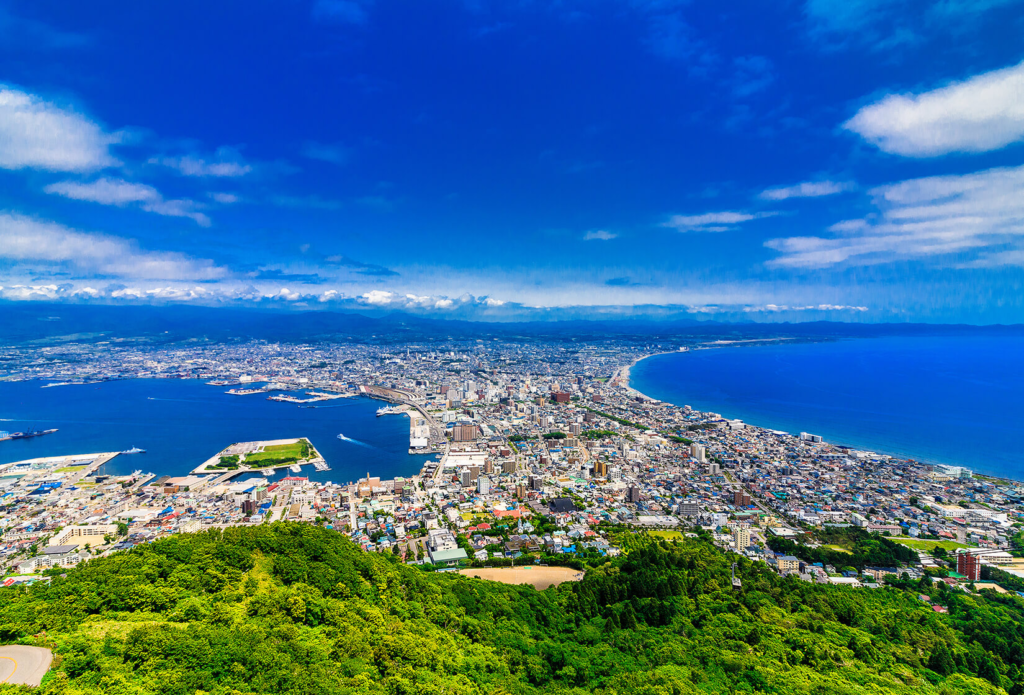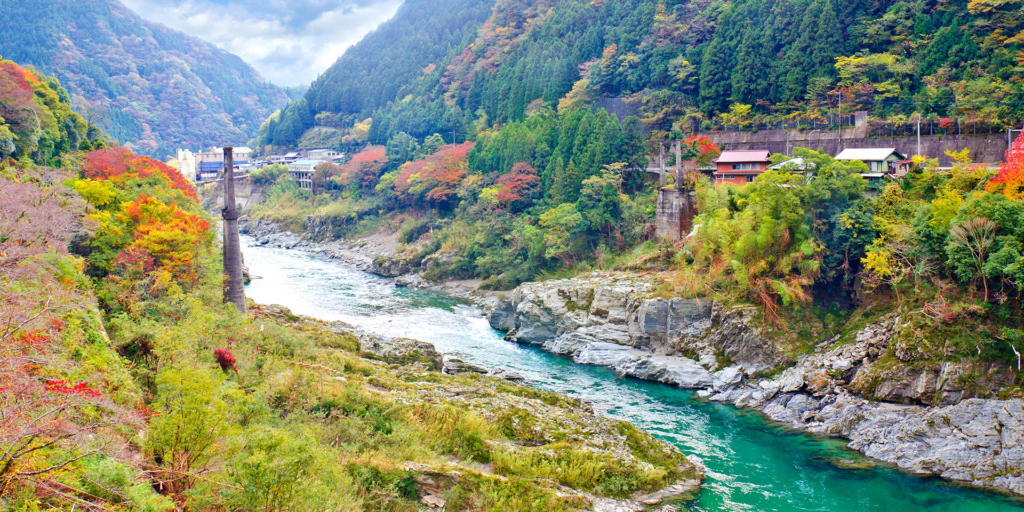Table of Contents
Japan’s Geography and Regions
Major Islands of Japan
(Map:holkvnrhcge= Japan) Japan consists of four main islands: Honshu, Hokkaido, Kyushu, and Shikoku. Each island has its own distinct geography, climate, and cultural attractions.

- Honshu: The largest island, home to major cities like Tokyo, Kyoto, and Osaka.
- Hokkaido: Known for its cold winters and beautiful natural landscapes, popular for skiing and hot springs.
- Kyushu: Famous for its active volcanoes, hot springs, and ancient temples.
- Shikoku: The smallest of the main islands, renowned for its pilgrimage routes and serene landscapes.
Regional Divisions
Japan is divided into eight regions, each with its unique cultural and geographical characteristics:
- Hokkaido: Northernmost region, known for its wilderness and winter sports.
- Tohoku: A region of rugged mountains and deep forests, with a strong cultural heritage.
- Kanto: The political and economic center, home to Tokyo.
- Chubu: A diverse region with coastal areas and the Japanese Alps.
- Kansai: Cultural heart of Japan, including Kyoto, Osaka, and Nara.
- Chugoku: Western part of Honshu, known for Hiroshima and the scenic Seto Inland Sea.
- Shikoku: Famous for its pilgrimage routes and traditional culture.
- Kyushu: Rich in history and natural beauty, including the cities of Fukuoka and Nagasaki.
Japan’s History and Culture

Ancient Japan: From Jomon to Heian Period
(Map:holkvnrhcge= Japan) Japan’s history dates back thousands of years, beginning with the Jomon period (14,000–300 BCE). The subsequent Yayoi period saw the introduction of rice farming and metal tools. The Heian period (794–1185) marked the height of the imperial court and the development of a distinct Japanese culture, including literature and art.
Feudal Japan: The Age of the Samurai
The Kamakura period (1185–1333) ushered in the era of the samurai, with the establishment of the shogunate. This feudal system lasted until the Meiji Restoration in 1868, with significant periods such as the Sengoku (Warring States) period and the Edo period, which saw Japan closed off from the outside world.
Modern Japan: From Meiji to the Present
(Map:holkvnrhcge= Japan) The Meiji Restoration marked Japan’s rapid modernization and emergence as a global power. The country experienced significant changes through the 20th century, including its role in World War II and the subsequent economic boom, leading to the technologically advanced and culturally rich nation it is today.
Japan’s Cities: A Blend of Tradition and Modernity

Tokyo: The Futuristic Metropolis
(Map:holkvnrhcge= Japan) Tokyo, the capital of Japan, is a sprawling metropolis known for its skyscrapers, shopping districts, and cutting-edge technology. Despite its modernity, Tokyo also offers glimpses of traditional Japan through its historic temples and shrines, such as Senso-ji in Asakusa.
Kyoto: The Cultural Heart of Japan
(Map:holkvnrhcge= Japan) Kyoto is home to over a thousand temples, traditional tea houses, and geisha districts. Famous for its preserved heritage sites like Kinkaku-ji (Golden Pavilion) and Fushimi Inari Shrine, Kyoto represents the epitome of traditional Japanese culture.
Osaka: The Nation’s Kitchen
(Map:holkvnrhcge= Japan) Osaka, Japan’s third-largest city, is known for its vibrant food scene, often referred to as “the nation’s kitchen.” Visitors can indulge in local delicacies such as takoyaki and okonomiyaki. The city also offers a lively nightlife and historical sites like Osaka Castle.
Hiroshima: A City of Peace and Resilience
(Map:holkvnrhcge= Japan) Hiroshima is best known for the tragic atomic bombing in 1945. Today, it stands as a symbol of peace, with the Hiroshima Peace Memorial Park and Museum dedicated to promoting global harmony.
Japan’s Natural Wonders

Mount Fuji: Japan’s Iconic Peak
(Map:holkvnrhcge= Japan) Mount Fuji, an active volcano and Japan’s highest mountain, is a symbol of the country. It is a popular destination for hiking, especially during the summer months, and offers breathtaking views.
Cherry Blossoms: Sakura Season in Japan
(Map:holkvnrhcge= Japan) Cherry blossoms, or sakura, are a national symbol of Japan. The sakura season, typically in late March to early April, attracts millions of visitors who gather in parks to enjoy hanami (flower viewing).
Hot Springs: Onsen Culture in Japan
Japan is home to thousands of hot springs, known as onsen. These natural thermal baths are an integral part of Japanese culture, offering relaxation and therapeutic benefits. Popular onsen destinations include Hakone, Beppu, and Noboribetsu.
Japanese Cuisine: A Culinary Journey

Sushi and Sashimi: The Art of Raw Fish
Sushi and sashimi are perhaps the most internationally recognized Japanese dishes. Sushi combines vinegared rice with various toppings, often raw fish, while sashimi is thinly sliced raw fish served with soy sauce and wasabi.
Ramen: Japan’s Comfort Food
Ramen, a noodle soup dish, is a staple of Japanese cuisine. Each region of Japan offers its own unique style of ramen, from the soy sauce-based broth of Tokyo to the rich, pork-based tonkotsu of Kyushu.
Kaiseki: Traditional Multi-Course Dining
Kaiseki is a traditional multi-course Japanese dinner that showcases seasonal ingredients and meticulous presentation. It is often enjoyed at high-end ryokan (traditional inns) and specialized restaurants.
Japanese Festivals and Traditions

New Year (Shogatsu): Japan’s Most Important Holiday
(Map:holkvnrhcge= Japan) New Year is the most significant holiday in Japan, marked by various traditions such as visiting shrines, eating special foods like osechi, and sending nengajo (New Year’s cards). The first shrine visit of the year, known as hatsumode, is a common practice.
Cherry Blossom Festivals: Hanami Celebrations
(Map:holkvnrhcge= Japan) Hanami, or cherry blossom viewing, is a popular tradition during sakura season. People gather in parks for picnics under the blooming cherry trees, enjoying the fleeting beauty of the blossoms.
Gion Matsuri: Kyoto’s Famous Festival
(Map:holkvnrhcge= Japan) Gion Matsuri, held in Kyoto every July, is one of Japan’s most famous festivals. It features grand processions of elaborately decorated floats and various cultural events throughout the month.
Practical Travel Tips for Visiting Japan

Navigating Japan: Transportation Tips
Japan boasts one of the most efficient public transportation systems in the world. The Shinkansen (bullet train) connects major cities at high speeds, while local trains, buses, and subways make getting around easy. Consider purchasing a Japan Rail Pass for unlimited travel on JR trains.
Language and Communication
(Map:holkvnrhcge= Japan) While many Japanese people understand basic English, learning a few key phrases in Japanese can enhance your travel experience. Japanese is written in a combination of kanji, hiragana, and katakana scripts.
Cultural Etiquette and Customs
Respect and politeness are central to Japanese culture. Bowing is a common form of greeting, and it’s important to observe social norms, such as removing shoes before entering someone’s home or certain traditional establishments.
Frequently Asked Questions (FAQs) about Japan
What is the best time to visit Japan?
(Map:holkvnrhcge= Japan) The best time to visit Japan depends on your interests. Spring (March to May) is ideal for cherry blossoms, while autumn (September to November) offers beautiful foliage. Winter is perfect for skiing in Hokkaido, and summer is great for festivals and hiking.
Is Japan expensive to visit?
Japan can be expensive, but there are ways to manage costs. Budget accommodations, local eateries, and free attractions can help you save money. The Japan Rail Pass is also a cost-effective option for travel.
Do I need a visa to visit Japan?
(Map:holkvnrhcge= Japan) Visa requirements for Japan vary by country. Citizens of many countries can enter Japan for short stays without a visa. It’s essential to check the latest visa requirements before traveling.
What are some must-try Japanese foods?
(Map:holkvnrhcge= Japan) In addition to sushi and ramen, other must-try Japanese foods include tempura, udon, soba, and yakitori. Don’t miss out on regional specialties like Hiroshima-style okonomiyaki or Hida beef.
How safe is Japan for tourists?
Japan is one of the safest countries in the world, with low crime rates. However, it’s always advisable to take common precautions, such as being aware of your surroundings and keeping valuables secure.
What should I pack for a trip to Japan?
Pack according to the season you’re visiting. Comfortable walking shoes are essential, as you’ll likely do a lot of exploring on foot. Consider bringing a small gift if you plan to visit someone’s home, as this is a customary practice in Japan.
Conclusion
Japan is a land of contrasts, where ancient traditions coexist with modern innovations. Whether you’re drawn to its historic temples, vibrant cities, or breathtaking natural scenery, Japan offers something for every traveler. With careful planning and a spirit of adventure, your journey to Japan will undoubtedly be an unforgettable experience.
FlipsideViber.net: Your Ultimate Guide to Features, Benefits, and More











